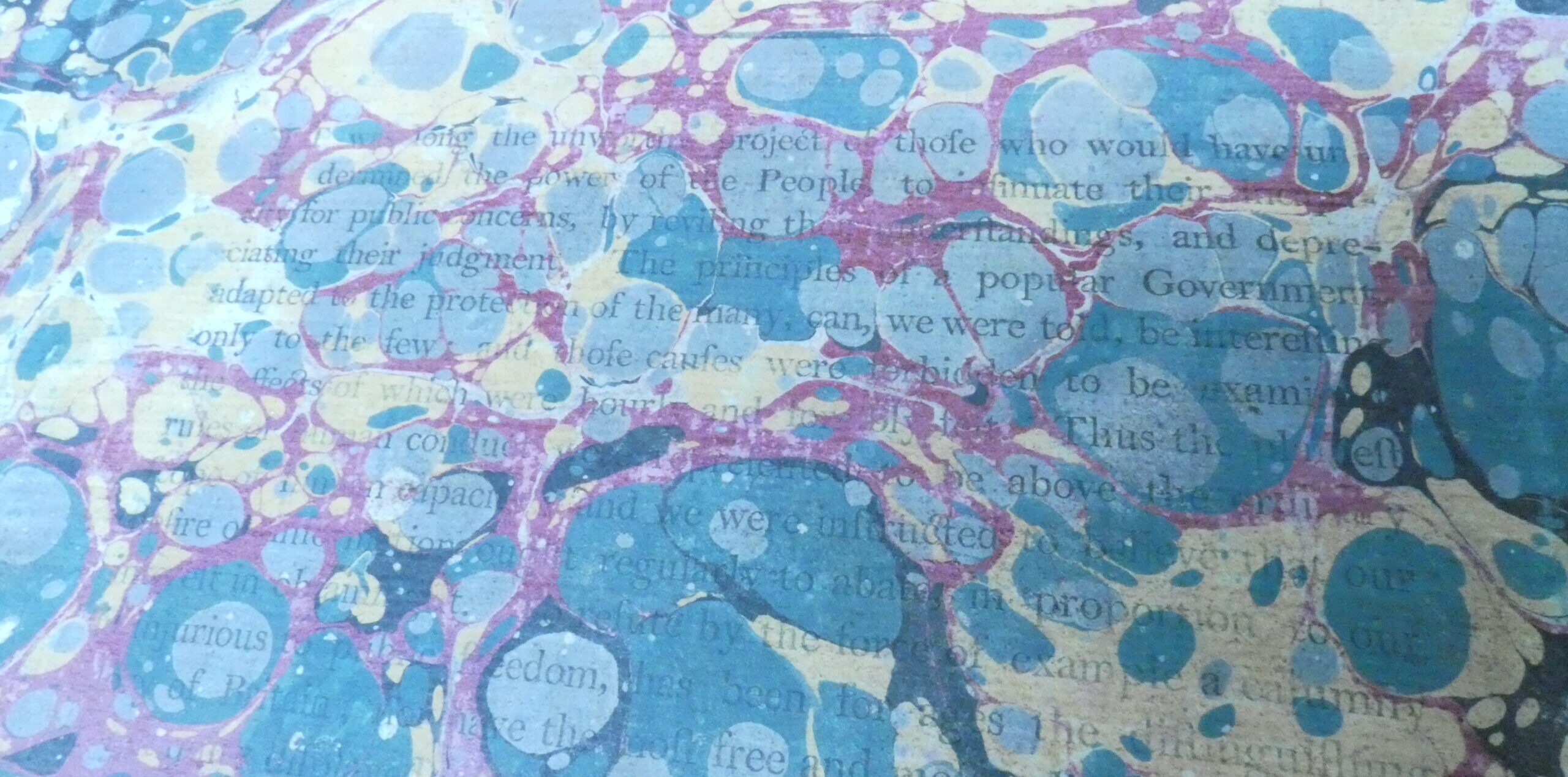In the conservation studio, we recently came across a volume with an unusual marbled endpaper. It is within a volume of the Subcommittee Minutes from Coram’s Foundling Hospital Archive. Under the marbling, there is visible printed text that appears to be the first page of a publication tilted “THE CITIZEN” and dated Tuesday, April 15, 1788.
There is no way to know exactly when the volume was bound. The minutes written within the volume start with the date of 1798. The printing beneath the marbling, however, is dated a full ten years prior. So the book must have been bound sometime after the endpaper was printed (1788) and before or up to the year of the first notes written within it (1798).
It has been well documented that bookbinders throughout history have recycled waste material. For instance, boards were made by gluing waste sheets together, or old parchment manuscripts were used to line book spines. Materials were expensive, so this makes a lot of sense.
There are other interesting features of this volume. The index tabs are hand drawn and there is a hole in a prominent position on the parchment of the front cover (visible in the images below). As parchment is manufactured from an animal skin, these types of holes were common among medieval manuscripts and bindings. The hole could be from an old animal scar or it could be a tear made by the parchment maker.
The elements are lovely reminders that this volume was made entirely by hand in an era just before the production of materials and goods was industrialised. These unique features of handmade objects instills a life force within objects that is unparalleled in machine-made objects. Handling historical volumes such as this one is one of the great honours of being a conservator.




